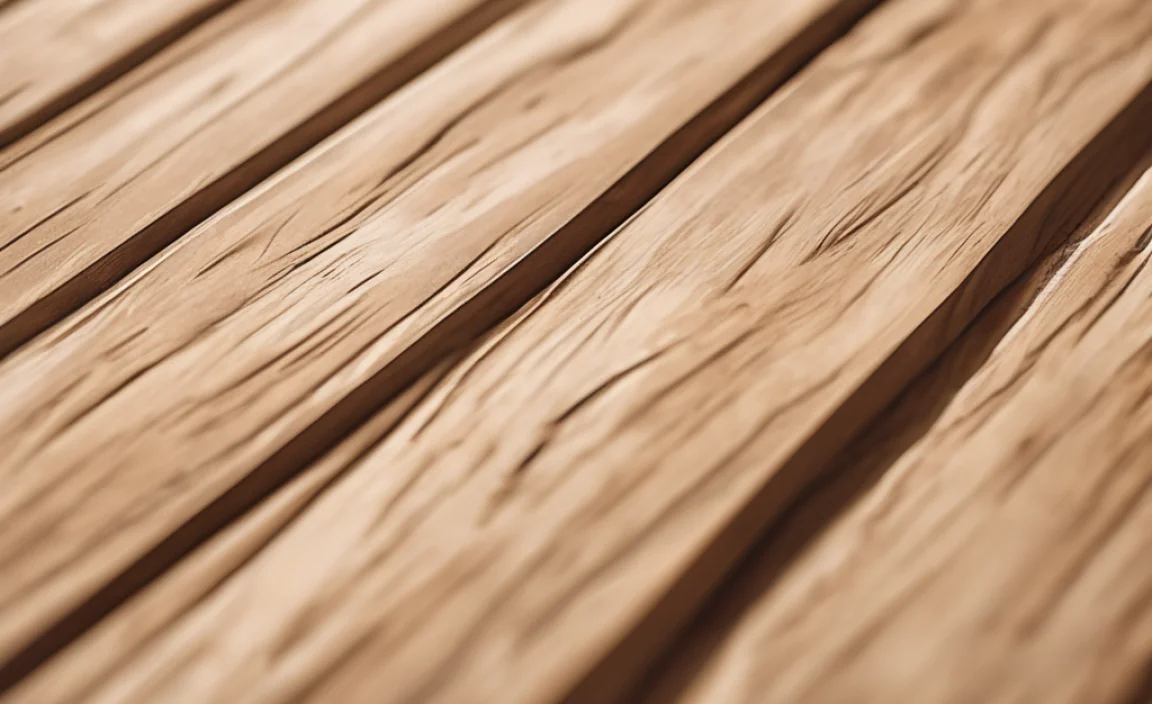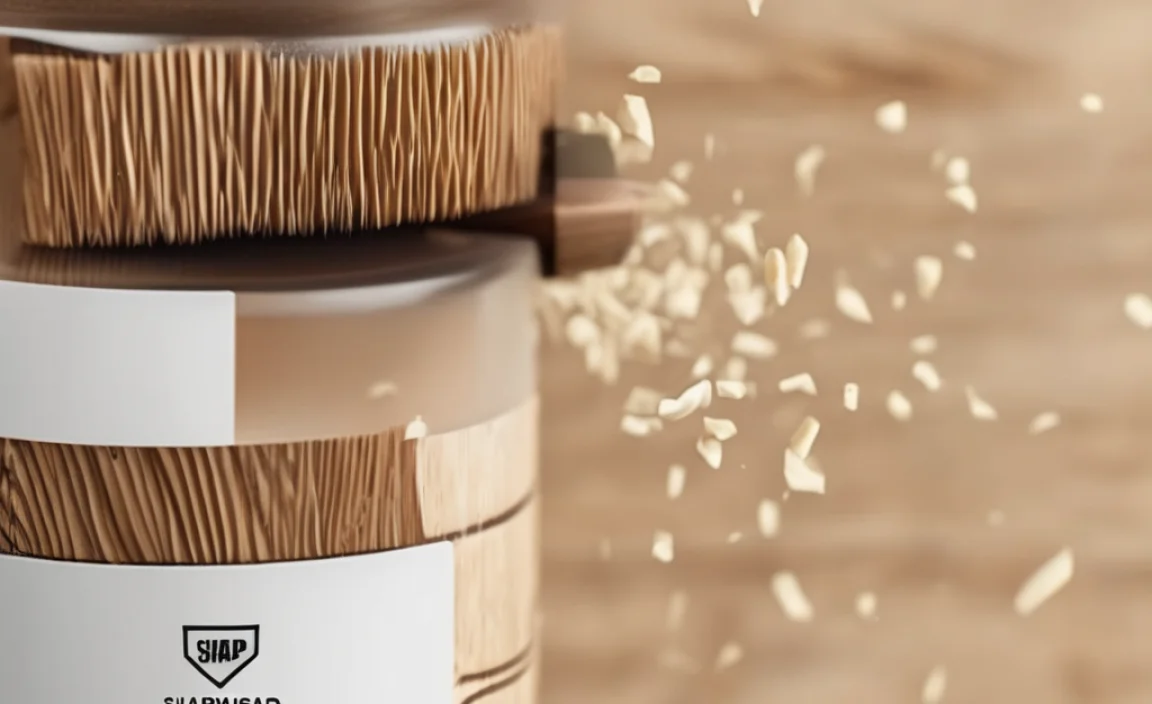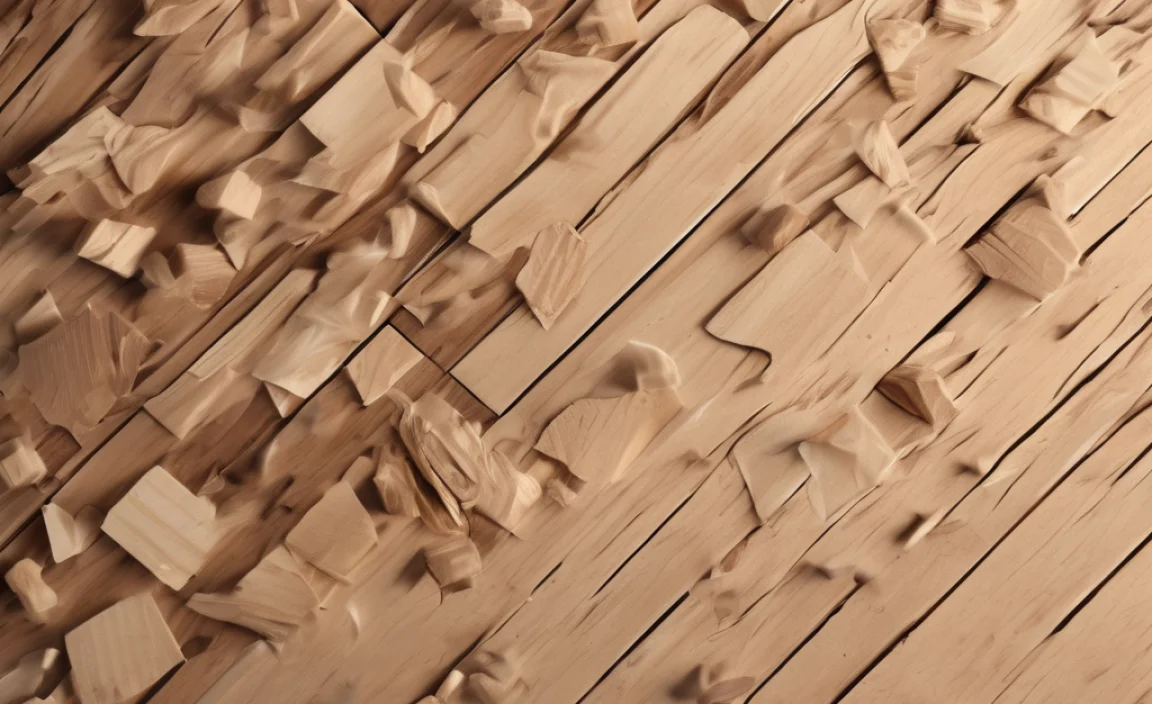Yes, wood filler absolutely hardens! But how *well* it hardens depends on the type, how you apply it, and the conditions around it. This guide will show you how to get the best, most durable results from your wood filler, so your repairs last.
Ever filled a hole in your favorite wooden table, only to find it soft and crumbly weeks later? It’s frustrating! Wood filler is supposed to harden and create a seamless repair. But sometimes, it just doesn’t seem to work the way it should. Don’t worry, you’re not alone. Many folks run into this issue. The good news is, with a few simple tips and tricks, you can get your wood filler to harden properly every time.
In this guide, we’ll walk you through everything you need to know about wood filler. We’ll cover the different types, how to apply them correctly, and how to ensure they harden properly for a long-lasting repair. Let’s get started and turn those frustrating fixes into satisfying successes!
Understanding Wood Filler

Wood filler is a fantastic product for fixing imperfections in wood. But to get the best results, you need to understand what it is and how it works. Let’s break it down.
What is Wood Filler?
Wood filler is a paste-like substance used to repair damaged or imperfect wood surfaces. It fills holes, cracks, and gouges, creating a smooth, even surface that can be sanded, stained, and painted. Think of it as a cosmetic fix for your woodworking projects or home repairs.
Types of Wood Filler
There are several types of wood filler, each with its own strengths and weaknesses. Choosing the right one for your project is crucial.
- Water-Based Wood Filler: Easy to use, cleans up with water, and is low in odor. Great for small indoor repairs.
- Solvent-Based Wood Filler: More durable and water-resistant than water-based fillers. Ideal for outdoor projects or areas exposed to moisture.
- Epoxy Wood Filler: The strongest and most durable type. Perfect for large repairs or areas that need structural support. It’s also great for marine applications.
- Latex Wood Filler: Flexible and paintable, making it good for filling gaps in trim or molding. It’s less likely to crack than other fillers.
- Grain Fillers: These are designed to fill the open pores of wood, creating a smooth surface for finishing.
How Wood Filler Hardens
Wood filler hardens through different processes depending on its type:
- Water-Based: Hardens as the water evaporates, causing the filler to shrink slightly.
- Solvent-Based: Hardens as the solvents evaporate, similar to water-based fillers, but often shrinks less.
- Epoxy: Hardens through a chemical reaction when the resin and hardener are mixed. This creates a very strong and durable bond.
- Latex: Hardens through a combination of evaporation and polymer cross-linking.
Factors Affecting Hardening

Several factors can influence how well and how quickly wood filler hardens. Being aware of these can help you avoid common pitfalls.
Application Thickness
Applying wood filler in thick layers can prevent it from hardening properly. The outer layer might dry and harden, but the inside can remain soft and pliable. Always apply in thin, even layers, allowing each layer to dry before applying the next.
Environmental Conditions
Temperature and humidity play a significant role in the hardening process:
- Temperature: Wood filler hardens best in moderate temperatures (around 70°F or 21°C). Extreme temperatures can slow down or prevent proper hardening.
- Humidity: High humidity can slow down the evaporation process for water-based and solvent-based fillers, leading to longer drying times.
Type of Wood Filler
As mentioned earlier, different types of wood filler have different hardening properties. Epoxy fillers generally harden the fastest and strongest, while water-based fillers may take longer and be less durable.
Surface Preparation
A clean and properly prepared surface is essential for wood filler to adhere and harden correctly. Remove any loose debris, old finishes, or contaminants that could interfere with the bonding process. Sanding the surface lightly can also improve adhesion.
Step-by-Step Guide to Applying Wood Filler

Now, let’s get into the practical steps of applying wood filler to ensure it hardens properly and creates a lasting repair.
Step 1: Gather Your Materials
Before you start, make sure you have all the necessary materials:
- Wood filler (appropriate type for your project)
- Putty knife or applicator
- Sandpaper (various grits)
- Cleaning supplies (e.g., mineral spirits, tack cloth)
- Gloves
- Safety glasses
Step 2: Prepare the Surface
Proper surface preparation is key. Follow these steps:
- Clean the Area: Remove any dirt, dust, grease, or loose particles from the area you’re going to fill. Use a brush, vacuum, or damp cloth.
- Sand the Surface: Use sandpaper (120-grit is a good starting point) to roughen the surface slightly. This helps the wood filler adhere better.
- Remove Sanding Dust: Wipe the area with a tack cloth to remove any sanding dust.
Step 3: Apply the Wood Filler
Now it’s time to apply the wood filler:
- Mix the Filler (if necessary): Some wood fillers, like epoxy, require mixing two components. Follow the manufacturer’s instructions carefully.
- Apply a Thin Layer: Use a putty knife to apply a thin, even layer of wood filler over the damaged area. Press it firmly into the crack or hole.
- Overfill Slightly: It’s better to slightly overfill the area, as the filler may shrink as it dries.
- Remove Excess Filler: Use the putty knife to remove any excess filler from around the repair area, creating a smooth transition.
Step 4: Allow to Dry
Drying time is crucial. Follow these guidelines:
- Check the Manufacturer’s Instructions: Drying times vary depending on the type of wood filler. Always refer to the manufacturer’s instructions.
- Provide Adequate Ventilation: Ensure good ventilation in the area to promote drying.
- Avoid Disturbing the Area: Don’t touch or disturb the filled area while it’s drying.
Step 5: Sand the Filler
Once the filler is completely dry, it’s time to sand it smooth:
- Start with Medium-Grit Sandpaper: Use 120-grit or 150-grit sandpaper to remove any excess filler and level the surface.
- Move to Fine-Grit Sandpaper: Use 220-grit sandpaper to smooth the surface and blend it with the surrounding wood.
- Sand in the Direction of the Grain: This helps to avoid scratching the wood.
- Remove Sanding Dust: Wipe the area with a tack cloth to remove any sanding dust.
Step 6: Finishing
After sanding, you can finish the repaired area to match the surrounding wood:
- Stain or Paint: Apply stain or paint to the repaired area to match the color and finish of the surrounding wood.
- Apply a Topcoat: Apply a clear topcoat to protect the repaired area and enhance its durability.
Troubleshooting Common Issues
Sometimes, even with the best efforts, things can go wrong. Here are some common issues and how to fix them.
Wood Filler Not Hardening
If your wood filler isn’t hardening, consider these factors:
- Too Thick Application: Apply thinner layers and allow each layer to dry completely before adding another.
- Low Temperature or High Humidity: Ensure the area is well-ventilated and the temperature is within the recommended range.
- Expired or Contaminated Filler: Use fresh wood filler and avoid contaminating it with dirt or other substances.
Cracking
Cracking can occur if the wood filler shrinks too much during drying:
- Use the Right Type of Filler: For large repairs, use epoxy wood filler, which is less prone to shrinking.
- Apply in Multiple Layers: Apply the filler in thin layers to minimize shrinkage.
- Keep Consistent Humidity: Avoid rapid changes in humidity during the drying process.
Poor Adhesion
If the wood filler doesn’t adhere properly, it may peel or flake off:
- Proper Surface Preparation: Ensure the surface is clean, dry, and sanded before applying the filler.
- Use a Bonding Agent: Apply a bonding agent or primer to the surface before applying the filler.
- Avoid Contamination: Don’t contaminate the filler with dirt or other substances.
Choosing the Right Wood Filler
Selecting the appropriate wood filler is crucial for a successful repair. Here’s a comparison table to help you decide:
| Type of Wood Filler | Pros | Cons | Best For |
|---|---|---|---|
| Water-Based | Easy to use, low odor, cleans up with water | Less durable, can shrink | Small indoor repairs |
| Solvent-Based | More durable, water-resistant | Strong odor, requires solvents for cleanup | Outdoor projects, areas exposed to moisture |
| Epoxy | Very strong, durable, water-resistant | More expensive, requires mixing | Large repairs, structural support, marine applications |
| Latex | Flexible, paintable, less likely to crack | Not as strong as epoxy | Filling gaps in trim or molding |
| Grain Fillers | Creates a smooth surface for finishing | Specific use case | Filling the open pores of wood |
Safety Tips
Working with wood filler can involve certain risks. Always follow these safety precautions:
- Wear Safety Glasses: Protect your eyes from dust and debris.
- Wear Gloves: Protect your hands from chemicals and irritants.
- Work in a Well-Ventilated Area: Avoid breathing in fumes from solvent-based fillers.
- Follow Manufacturer’s Instructions: Read and follow the manufacturer’s instructions carefully.
- Dispose of Waste Properly: Dispose of used wood filler and cleaning supplies according to local regulations.
Cost Considerations
The cost of wood filler can vary depending on the type, brand, and quantity. Here’s a general idea:
- Water-Based: Typically the most affordable option, ranging from $5 to $15 per container.
- Solvent-Based: Slightly more expensive, ranging from $10 to $20 per container.
- Epoxy: The most expensive option, ranging from $20 to $50 or more per kit.
- Latex: Similar in price to water-based fillers, around $5 to $15 per container.
Remember to factor in the cost of other materials, such as sandpaper, putty knives, and finishing products.
Alternatives to Wood Filler
While wood filler is a great option, there are alternatives you might consider depending on the project:
- Wood Putty: Similar to wood filler but generally used for smaller repairs and doesn’t harden as much.
- Sawdust and Glue Mixture: Mix sawdust from the same wood with wood glue to create a custom filler.
- Wood Shims: For larger gaps, use wood shims to fill the space before applying filler.
- Bondo: An auto body filler that can also be used on wood for durable repairs.
Wood Filler and the Environment
Consider the environmental impact of your wood filler choice:
- VOCs: Solvent-based fillers contain volatile organic compounds (VOCs) that can be harmful to the environment and your health. Choose low-VOC or water-based options when possible.
- Disposal: Dispose of wood filler and containers responsibly. Check local regulations for proper disposal methods.
- Sustainable Options: Look for wood fillers made from sustainable or recycled materials.
FAQ About Wood Filler
Here are some frequently asked questions about wood filler to help you further understand its use and properties.
1. Can I stain wood filler?
Yes, you can stain many types of wood filler, especially those labeled as “stainable.” However, water-based fillers tend to absorb stain differently than the surrounding wood, so test a small area first. Solvent-based and epoxy fillers often provide more consistent staining results.
2. How long does wood filler take to dry?
Drying time varies depending on the type of wood filler, the thickness of the application, and environmental conditions. Generally, water-based fillers dry in 1-2 hours, while solvent-based and epoxy fillers may take 4-24 hours. Always check the manufacturer’s instructions for specific drying times.
3. Can I use wood filler on outdoor projects?
Yes, but choose a durable, water-resistant wood filler like solvent-based or epoxy. Water-based fillers are not recommended for outdoor use as they can degrade with moisture exposure. Ensure the surface is properly prepared and sealed to protect the repair.
4. Is wood filler waterproof?
No, most wood fillers are not completely waterproof. While some, like epoxy fillers, offer excellent water resistance, prolonged exposure to moisture can still cause damage. For projects exposed to water, use a waterproof sealant or finish over the wood filler.
5. Can I paint over wood filler?
Absolutely! Wood filler provides an excellent surface for painting. Once the filler is dry and sanded smooth, apply a primer before painting to ensure good adhesion and a uniform finish. Use a high-quality paint suitable for wood surfaces.
6. How do I prevent wood filler from shrinking?
To minimize shrinkage, apply wood filler in thin layers, allowing each layer to dry completely before adding another. Use a filler designed for minimal shrinkage, such as epoxy. Also, avoid applying filler in extremely dry or hot conditions, which can accelerate the drying process and increase shrinkage.
7. Can I use wood filler to repair rotted wood?
Wood filler is not a long-term solution for rotted wood. Rotted wood should be removed and replaced. However, epoxy wood fillers can sometimes be used to consolidate and stabilize slightly damaged wood after the rotted sections have been removed.
Conclusion
So, does wood filler harden? Absolutely! By understanding the different types of wood filler, following the proper application techniques, and considering environmental factors, you can ensure your repairs are strong, durable, and long-lasting. Don’t be intimidated by those cracks and holes – you’ve got the knowledge to tackle them head-on.
Remember to always prioritize safety, take your time, and follow the manufacturer’s instructions. With a little practice, you’ll be able to achieve professional-looking results and keep your wooden surfaces looking their best for years to come. Now go ahead and give those woodworking projects the TLC they deserve!
